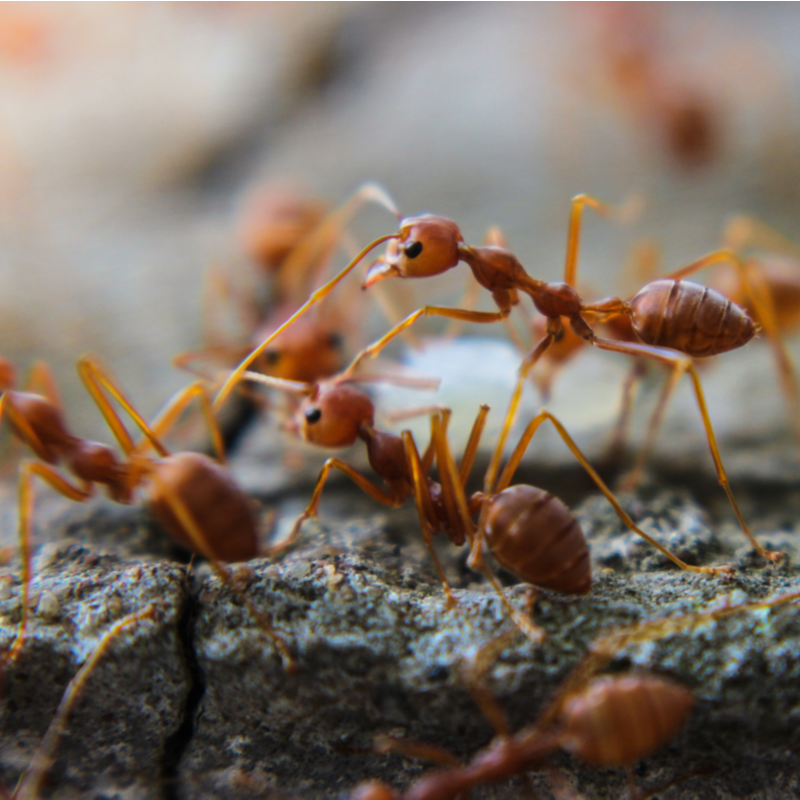Welcome to Facts Vibes! 🔥 Did you know that fire ants are not only notorious for their painful stings, but they also form intricate underground colonies? Let’s dive into some fascinating and surprising fun facts about these resilient and adaptable insects.
Exploring the Fascinating World of Fire Ants: Fun Facts You Didn’t Know
Exploring the Fascinating World of Fire Ants: Fun Facts You Didn’t Know
Fire ants are a common pest in many parts of the world, known for their painful stings and aggressive behavior. But beyond their nuisance value, these insects have a remarkably complex and fascinating biology that is worth exploring.
Fire ants are incredibly resilient and adaptable creatures. They have evolved to thrive in a wide range of environments, from urban areas to agricultural fields. Their ability to establish large colonies and defend them aggressively makes them a formidable force in the ecosystem.
One of the most astonishing facts about fire ants is their engineering prowess. They create intricate underground tunnels and chambers to house their colonies, complete with ventilation systems and waste disposal mechanisms. These structures can extend deep into the ground and provide a safe haven for the ants and their brood.
In addition to their impressive engineering skills, fire ants exhibit remarkable social behavior. Their colonies are highly organized, with distinct roles for different members, including workers, soldiers, and the queen. The cooperative nature of their societies allows them to efficiently gather food, defend their territory, and care for their young.
From a biological perspective, fire ants also possess some unique features. For example, they are able to form floating rafts during floods by linking their bodies together, demonstrating a remarkable adaptation to survive in challenging conditions.
Despite their fascinating traits, fire ants can pose serious threats to agriculture, ecosystems, and even human health. Understanding their behavior and biology is crucial for developing effective management strategies to mitigate their impact.
In conclusion, while fire ants may be notorious for their painful stings, delving into the intricacies of their world reveals a trove of fascinating and unexpected facts that shed light on the resilience and complexity of these tiny but formidable insects.
Most popular facts
Fire ants are named for their fiery sting that causes a burning sensation.
Fire ants are named for their fiery sting that causes a burning sensation.
They are native to South America but have spread to many other parts of the world.
They are native to South America but have spread to many other parts of the world.
Fire ant colonies can contain hundreds of thousands of ants and multiple queens.
Fire ant colonies can contain hundreds of thousands of ants and multiple queens.
These ants are known for their aggressive behavior and will swarm and attack perceived threats.
The ants are known for their aggressive behavior and will swarm and attack perceived threats.
The mounds built by fire ant colonies can reach heights of over 18 inches.
Yes, fire ant colonies can build mounds that reach heights of over 18 inches.
They are omnivorous and will eat almost anything, including plants, insects, and even small animals.
They are omnivorous and will eat almost anything, including plants, insects, and even small animals.
Fire ants are excellent builders and can construct intricate underground tunnels and chambers.
Fire ants are excellent builders and can construct intricate underground tunnels and chambers.
They are highly adaptable and can thrive in diverse environments, from deserts to urban areas.
They are highly adaptable and can thrive in diverse environments, from deserts to urban areas.
Fire ant workers come in different sizes, with the larger ones tasked with defending the colony.
Fire ant workers come in different sizes, with the larger ones tasked with defending the colony.
Their stings can cause severe allergic reactions in some individuals, leading to medical emergencies.
Severe allergic reactions can result from their stings, causing medical emergencies for some individuals.
Fire ants are a significant agricultural pest, attacking crops and damaging farm equipment.
Fire ants are a significant agricultural pest, attacking crops and damaging farm equipment.
They have been observed forming rafts with their bodies to survive flooding and water crossings.
They have been observed forming rafts with their bodies to survive flooding and water crossings.
Fire ants contribute to the ecosystem by controlling insect populations and aerating the soil.
Fire ants contribute to the ecosystem by controlling insect populations and aerating the soil.
Their venom contains alkaloids that may have potential medical applications in pain management.
Their venom contains alkaloids that may have potential medical applications in pain management.
Various methods, such as baiting and biological control, are used to manage fire ant infestations.
Baiting and biological control are used to manage fire ant infestations.
In conclusion, fire ants are truly fascinating creatures with remarkable adaptations and behaviors that make them both a nuisance and a wonder of nature. Despite their notorious sting, their cooperative social structure and incredible resilience make them an intriguing subject for study in the realm of biology and ecology.
